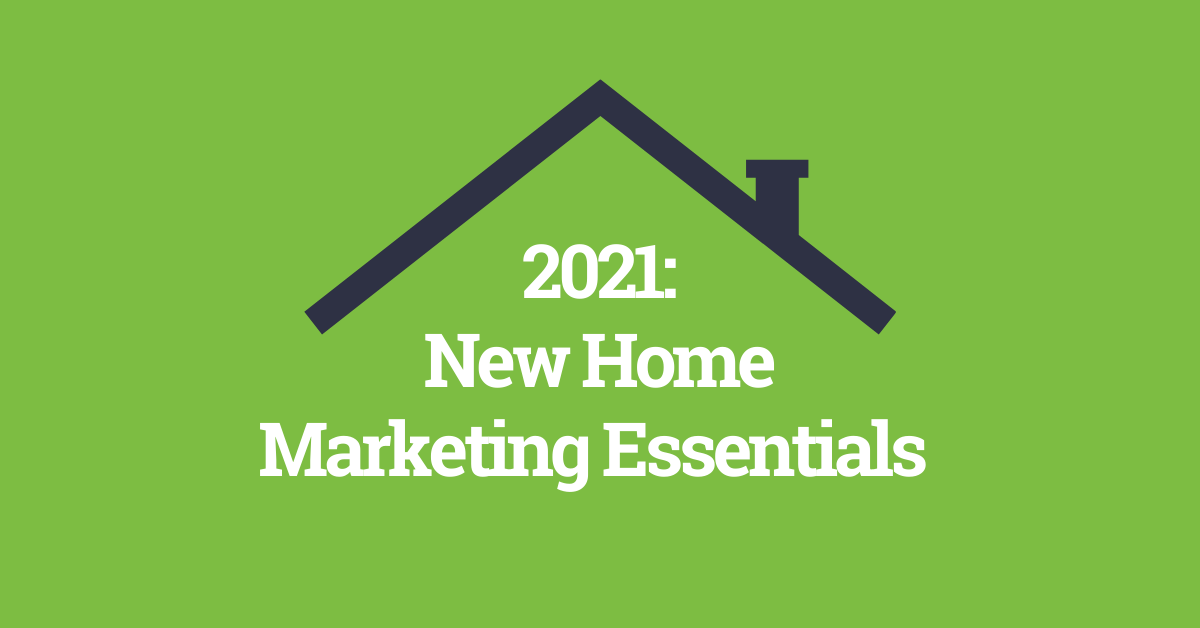When the nation was thrust into social distancing in early 2020, few homebuilders were prepared. The home shopping experience that consumers demand had already begun to shift, but COVID-19 and the necessity of social distancing accelerated the process.
Now — just past the threshold into 2021, we know social distancing will stay with us for the near future. And now that pandora’s box has been opened, there’s no going back to the way things used to be. Home shoppers will continue to demand a fully immersive, on-demand homebuying experience, and that requires new tools, new technology and new skills.
At UTour, we find ourselves in a unique position to help homebuilders plan for the year ahead. Not only has our self-guided tour platform been one of the leading proptech innovations of 2020, but our CEO, Tom Nelson, also happens to be the President of NDG Communications, an independent real estate marketing agency with 20 years of experience. We’ve compiled a list of NDG’s essential new home marketing tips for 2021.
Time to Improve and Optimize the Digital Experience
Home shoppers were starting their search online previously, and now, they’re going further online than ever before. In 2021, not only do you need a dynamic, compelling website, but you need one filled with rich — and frequently updated — content. Home shoppers want to control their new home journey, and the more they can explore and answer for themselves on your website, the more likely they will be to reach out and go into business with you.
You’ll also want to harness the power of automation to allow your shoppers to continue their search on their own time through tools such as self-guided tours and website chatbots. Just remember — automation won’t replace customer service and a personal touch. You can’t just ‘set it and forget it.’ But with the proper management, automation tools can provide incredible value to both your team and your home shoppers.
If you’re offering self-guided home tours, then put the button to schedule one front and center within the home listings on your website. Do the same for virtual tour options, interactive floor plans, online design studios and everything in between. Let your website visitors go deeper with digital tools and you’ll bring more buyers to your door.
Empower Your Tools to Work Together
We can all agree that 2020 was a whirlwind. Many builders had to bring on new tools at a moment’s notice to help facilitate success amid the new reality of selling homes from afar. This year, we’ve settled into this new reality, and that means it’s time to ensure these tools and technologies have been integrated properly into your existing tech stack to withstand the long haul.
It’s time to lay the groundwork, create workflows and standardize measurement to ensure you’re able to properly attribute the impact that certain tools are having with your shoppers. Most importantly, make sure your sales and marketing initiatives are working together.
Aim for Targets that Make Sense
Marketing budgets should always be set purposefully and methodically. Most homebuilders base their budgets upon their projected revenue for the coming year, and plan to spend between 0.75% and 1.25% of revenue, depending on a wealth of factors. But our data-driven approach to residential real estate marketing at NDG Communications has helped develop more sophisticated budgeting methods based upon detailed historic data from our clients. The more accurately you are monitoring your ROI in every possible way, the more efficiently you can plan and spend your budget.
Perhaps the most essential single budgeting tip for new home marketing in 2021: Focus more of your budget this year on digital transformation and innovation initiatives for your business and on the development of first-class content for your website than ever before. Data from firms like Do You Convert support this point — their recent study showed that over 50% of homebuilder leads in 2020 started as an online lead. In 2021, it's important to continue to rethink the conventional wisdom of high-cost, low-ROI tactics like excessive in-person events, and instead hone in on making your customer's home shopping experience as friction-free as possible before they even engage with your sales associates.
Prioritize the Customer Experience
The best way to ensure your sales and marketing efforts are working together seamlessly is to be obsessive with your customer’s experience. Drill down and see where your shoppers are dropping off. Written feedback from buyers can certainly be helpful, but it’s also biased. Now that so much of the new home journey is happening online, there’s a plethora of data at your fingertips to determine your customer’s friction points.
Check-in on your bounce rates and see which pages they’re coming from on your website. Then, look to make optimizations. Utilize a tool like HotJar to see where your customer’s attention is being drawn to on your website. Are your customer’s attempting to click an image that isn’t actually interactive? Make changes based on what your customer data is telling you and create a superior customer experience — both online and in-person — to set yourself apart from the competition.
Shepherd Your Shoppers Through the Funnel
Not all your messaging will resonate with all your prospects, and you will need to embrace this idea to succeed in 2021. It’s time to utilize thoughtfully positioned content to reach individual groups of prospects where they are within the funnel. Start broad with brand awareness using placements such as social media, paid search, connected TV and SEO content marketing. Save your harder sell messaging for remarketing where it will actually make a difference.
Opening a new community? Offer prospects the inside scoop by joining your interest list. Then keep them engaged with personal communications and email newsletters. Be thoughtful about how you guide your prospects from the first impression to the day of closing.
Ultimately, In the coming year, you will need to be intentional about delivering interactive, customer-centric experiences supported by automation, artificial intelligence, and a deeper integration of technology across marketing and sales efforts if you want to meet the expectations of today’s homebuyer.
Looking for additional guidance and thought leadership? Check out this 2021 new home marketing guide from our friends at Lasso CRM.







